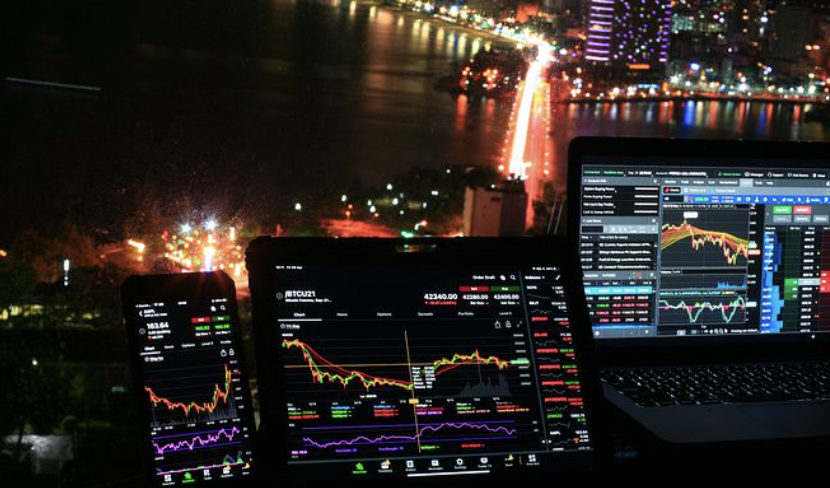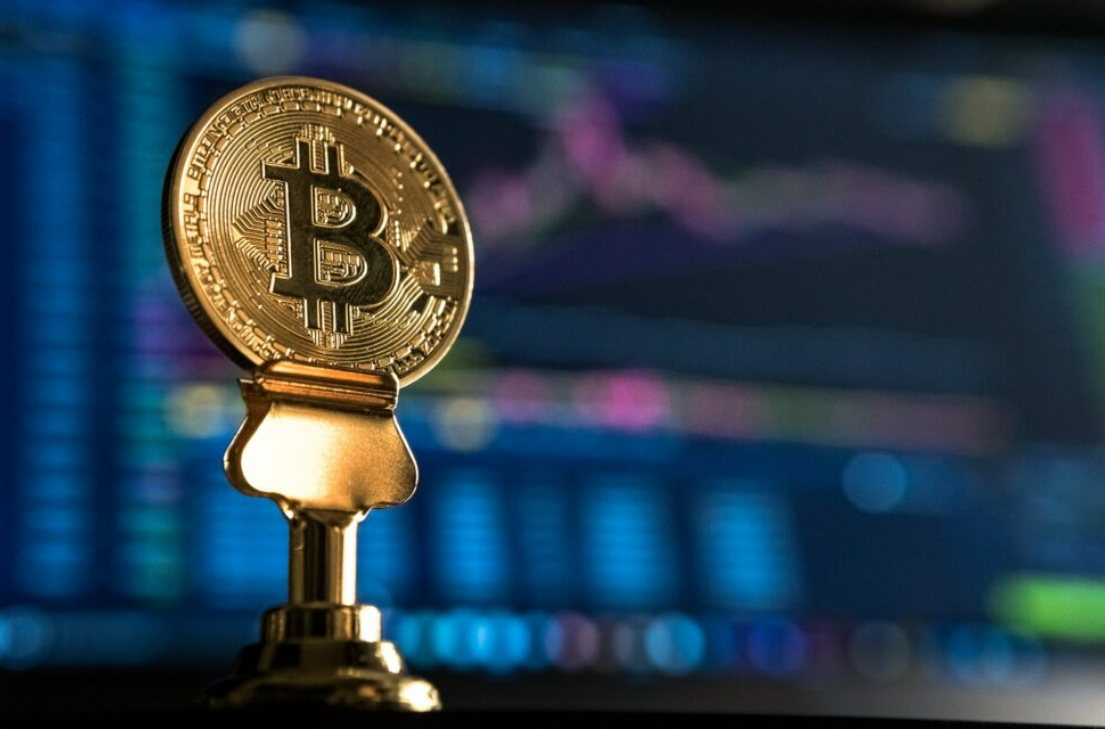
Daniel Rogers
May 25, 2022 11:55

Precious metals are rare, economically valuable metals. They are valued due to their scarcity, industrial utility, or investment features that make them a desirable store of value. Gold, silver, palladium, and Platinum are examples of noteworthy precious metals.
There are several ways to acquire precious metals, such as gold, silver, and Platinum, and several compelling reasons to indulge in the treasure hunt. If you're new to precious metals, continue reading to discover more about how they operate and how to invest in them.
Gold is the most recognizable and valuable precious metal. It is remarkable due to its resistance to corrosion, its ability to be shaped, and its capacity to carry heat and electricity. Although it has specific industrial use in dentistry and electronics, it is primarily used for jewelry and money. It has long been a valuable shop. As a result, investors seek it out during economic or political turmoil and as a hedge against inflationary pressures.
There are several gold investment options. You may acquire gold coins, bars, and jewelry in tangible form. Gold equities (shares of gold mining, streaming, or royalty firms), gold-focused exchange-traded funds (ETFs), and gold-focused mutual funds are also available to investors. Each gold investing choice has advantages and disadvantages. The cost of keeping and insuring actual gold and the potential underperformance of gold stocks and gold ETFs relative to the price of gold are disadvantages. Advantages include genuine gold's ability to follow the cost of the precious metal and the possible outperformance of gold equities and ETFs.
The second most prevalent precious metal is silver. It is a crucial metal utilized in the electrical, electronic, and photographic sectors. Due to its electrical characteristics, silver is an essential component in solar panels, for instance. Silver is also used to manufacture jewelry, cutlery, coins, and bars, making it a valuable commodity.
Silver's dual function as an industrial metal and store of value makes its price more volatile than gold's. The volatility can have a significant influence on the cost of silver stocks. During periods of substantial industrial and investor demand, silver prices can sometimes outperform gold prices.
Less well-known than the preceding three metals, palladium has more industrial applications. Palladium is a silvery-shiny metal that is utilized in various production processes, especially those involving electronics and industrial items. Additionally, it may be used in dentistry, medicine, chemistry, jewelry, and groundwater remediation.
The United States, Russia, South Africa, and Canada produce the most of this uncommon metal, with the atomic number 46 on the periodic chart.
In 1939, jewelers began using palladium in jewelry. When combined with yellow gold, this alloy produces a metal that is stronger than white gold. The government of Tonga released palladium coins commemorating the coronation of King Taufa'ahau Tupou IV in 1967, and this is the first documented usage of palladium as currency.
Like gold and silver, Platinum is traded continuously on global commodity markets. Because it is so rarer than gold, it tends to command a more excellent price (per troy ounce) during the call and political stability periods. Less metal is extracted from the earth each year.
Similar to silver, Platinum is considered an industrial metal. Automobile catalysts, which are employed to reduce harmful emissions, produce the most significant demand for Platinum. After this, jewelry represents the majority of the market. The remaining is used for petroleum and chemical refining catalysts and in the computer industry.
Due to the vehicle industry's heavy reliance on metal, platinum prices are strongly affected by automobile sales and production data. Legislation mandating more catalytic converters in autos might raise demand. In 2009, however, American and Japanese manufacturers began using recycled car catalysts or a more significant proportion of palladium, Platinum's trusty and frequently less expensive brother metal.
South Africa and Russia are the only two nations where platinum mining is highly concentrated. This increases the likelihood of cartel-like conduct that would sustain or artificially increase platinum prices.
Copper's broad market has several industrial, manufacturing, and aesthetic applications. Like other precious metals, copper is infinite supply and subject to ever-increasing demand. Copper is sometimes underestimated as an investment compared to gold and silver, but many investors are purchasing copper bullion coins and bars to protect their portfolios against further currency depreciation.
Investing in precious metals offers benefits over equities, including protection against inflation, intrinsic value, absence of credit risk, high liquidity, portfolio diversification, and convenience of purchase.
A hedge against inflation, the price of precious metals tends to increase at or above the inflation rate.
Precious metals are tangible assets worth beyond financial goals, such as jewelry or industrial applications.
It is a relatively liquid investment, as precious metals (particularly investment items) may be readily converted to cash.
Precious metals provide portfolio diversity since their price movements do not necessarily mirror stock and bond markets.
In addition to some of the downsides of investing in precious metals, investors need also consider additional risks. One of the most significant is price volatility. Several variables can influence the price of precious metals, including economic fluctuations, Federal Reserve policies, investor demand, mining supply, and inflation.
In contrast, assets generated from precious metals (such as stocks, ETFs, and mutual funds) are subject to a distinct set of risk considerations. For instance, a mining company's share price might considerably underperform the price of precious metals due to cost overruns during the development of a new mine, poor management, or financial concerns. In addition, there is a more significant link between these sorts of investments and the stock market, which might lead the price of precious metals stocks to lag the cost of the underlying metals during a vast market decline.
The emergence of cryptocurrencies represents a new danger for precious metals investors. Gold and silver have comparable investing attributes to crypto assets, and both are possible hedging assets against inflation and geopolitical and economic concerns. As more investors shift their focus to cryptocurrencies, investor demand for gold and silver may decrease, causing their values to fall.
Let's examine the choices open to individuals who wish to invest in precious metals.
Exchange-traded funds (ETFs) offer a simple, liquid way to buy and sell gold, silver, palladium, and Platinum. However, investing in ETFs does not provide access to the actual commodity. Therefore, you have no claim on the metal held in the fund, and you will not receive genuine gold or silver bars or coins.
The stocks of precious metals miners are leveraged to the precious metals' prices. If you do not understand how mining companies are priced, it may be prudent to stick to funds with established track records managers.
Futures and options markets give investors liquidity and leverage for big metals wagers. Derivative goods have the most significant profit and loss potential.
Those without a safety deposit box or safe are prohibited from storing coins and bars. Undoubtedly, bullion is the only option for pessimists, but bullion is illiquid and painful to possess for those with a timeframe.
Bars are the apparent victor for versatility as an investment medium among precious metals investments. Metal bars benefit from being available in a variety of weights and diameters. Due to the high price of gold, gold bars begin at just one gram. Typically, silver bars start at one ounce. Bars are an excellent alternative for individuals who wish to add significant amounts of bullion to their holdings swiftly. In the top weight levels, bars can weigh up to more than one kilogram. These heavy bars are pretty pricey, but they are the most efficient approach to rapidly acquiring a significant precious metals portfolio.
Because of their unique properties, gold and silver coins may be excellent investments. In contrast to rounds and bars, bullion coins might have collector value. Recent gold and silver coins, such as Canadian Maple Leaf coins, have little collector value. The collector value of American gold coins made before 1933, when the circulation of gold was eliminated, can account for more than half of their overall worth. If you intend to invest in coins, it is crucial to recognize that your investment may involve more than just bullion value.
New investors choose rounds because they are often quite simple to invest in. A few gold bands are available on the market, while silver and copper rounds predominate. Rounds generally weigh between one to five troy ounces, offering them a versatile option for deciding how much metal to purchase at any one moment. Additionally, most rounds include attractive patterns, making buying precious metals even more fun.
Certificates provide investors with all the advantages of owning actual gold without the hassles of transit and storage. However, certificates are worthless if you're searching for insurance in the event of a natural catastrophe, and do not expect anybody to trade them for something of worth.
The stock market is one of the easiest methods to invest in precious metals. Several dear metals-focused corporations trade on stock markets. Here are five of the best precious metals stocks for investors:
AG (NYSE: AG): First Majestic Silver First Majestic Silver is a mining business for silver and gold. It has the most direct exposure to silver prices in the mining industry (as assessed by miners with a market capitalization of at least $1 billion), which accounted for 56 percent of its income in 2021.
Franco-Nevada (NYSE: FNV): Franco-Nevada is the only royalty and streaming corporation specializing in gold. In addition to silver, PGM, energy, and other mined commodities, the company earns money.
Newmont Mining (NYSE: NEM) is the largest gold mining corporation and the fourth-largest silver producer globally. In addition to producing precious metals, Newmont also manufactures copper, zinc, and lead.
(NYSE: SBSW): Sibanye-Stillwater (NYSE: SBSW). The world's largest primary producer of PGMs, including Platinum and palladium, is Sibanye-Stillwater. It is also a top producer of gold and has assets in metals required to create batteries for electric vehicles (EV)s.
Wheaton Precious Metals (NYSE: WPM) is among the top precious metals streaming firms in the world, deriving income from gold, silver, palladium, and cobalt.
Precious metals offer outstanding inflationary protection due to their intrinsic value, immunity to credit risk, and inability to be inflated. That implies you cannot print additional copies. In addition, they offer "social unrest insurance" against economic or political/military unrest.
According to investment theory, precious metals have a low or negative connection with other investment vehicles, such as stocks and bonds. Even a tiny proportion of precious metals will minimize portfolio volatility and risk.
The reality is that nobody, even ourselves, can advise you on which precious metal to purchase. As with any other asset type, a precious metals portfolio is most secure when diversified, and silver or gold may be the most fantastic starting point for newbies. Once a portfolio contains a minimum amount of each metal, many investors begin including lesser-known metals such as Platinum, palladium, or copper. By diversifying your investment portfolio with precious metals, you may reduce its risk.
There is a danger of experiencing high-pressure sales methods and even fraud when investing in actual precious metals. Remember that no credible financial expert should pressure you to make a quick investment choice or encourage you to "act immediately." Even if no fraud is being committed, such pressure is wrong. Be very cautious about unwanted phone calls. Often, persuasion techniques are employed, such as dangling the potential of enormous gains (the "phantom riches" method) or hinting that investment is scarce (playing the "scarcity" card).
There is no unified, regulator-approved list of gold dealers, but the Better Business Bureau has accredited specific gold dealers similar to other companies. Meanwhile, the United States Mint maintains a searchable listing of coin vendors. The Background Affiliation Status Information Center (BASIC) of the National Futures Association (NFA) can inform you whether a business or individual is registered and whether they have been subject to disciplinary measures. And it is always prudent to investigate the background of an investing professional using FINRA's BrokerCheck and a general Internet search.
Do not believe claims that actual metal investments are "safe" or risk-free. Investing in solid precious metals involves several hazards, including storage fees, price volatility, and investor loans to finance the acquisition of metal bars, bullion, or coins. Before sending any money, seek a risk disclosure statement and the salesperson's name, address, telephone number, and that of the company. If the salesman responds negatively, terminate the conversation and search for another vendor.
Investing in precious metals sometimes involves using leverage, which is dangerous and expensive. You may invest in precious metals by paying a portion of the cost in cash and the remainder "on margin." In rare instances, the margined part of the metal's buying price might reach 80 percent. This is an interest-bearing loan that is vulnerable to a margin call if the value of the investment drops. You may be compelled to invest more funds in the case of a margin call to prevent your investment from being liquidated without your approval or prior notice.
Physical precious metals investments can be difficult to profit from due to account opening fees, commissions that can reach 15 percent or more of the asset (including any leveraged portion), storage fees, management fees, and ongoing interest on the loan for the leveraged amount of the purchase of the precious metal. Ensure you are aware of all expenditures and the rate of return required to break even before investing.
Precious metals investing is not for everyone. You must establish why you wish to invest in precious metals (as a hedge against inflation, store value, diversify your portfolio, or profit from rising prices) and select the precious metal and investment vehicle that corresponds most closely with your investment thesis. Each choice has its advantages, disadvantages, and dangers. One of the most significant hazards is that you may be correct in your prediction (e.g., gold prices will rise) but select an investment vehicle that underperforms the precious metals. Investors must carefully decide whether they wish to invest in precious metals, and if they do, they must thoroughly comprehend the related dangers.

May 13, 2022 16:36

May 25, 2022 15:18